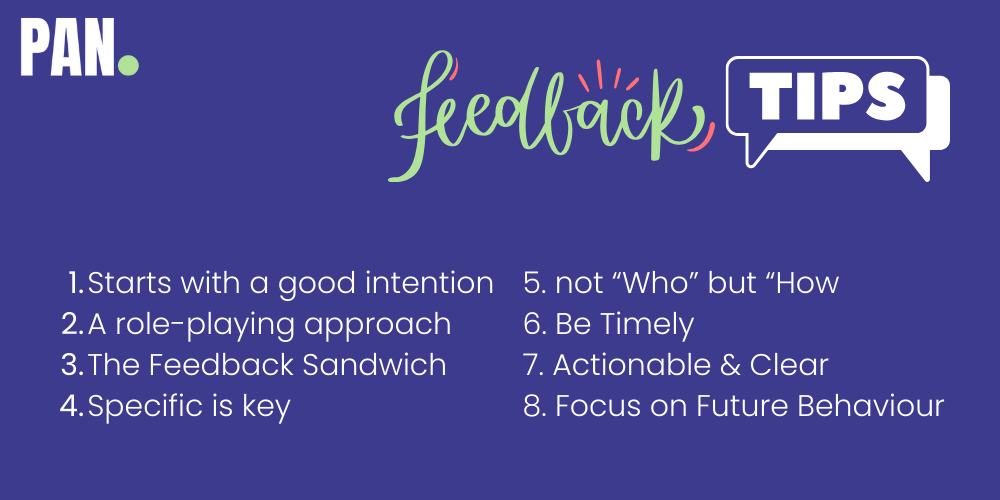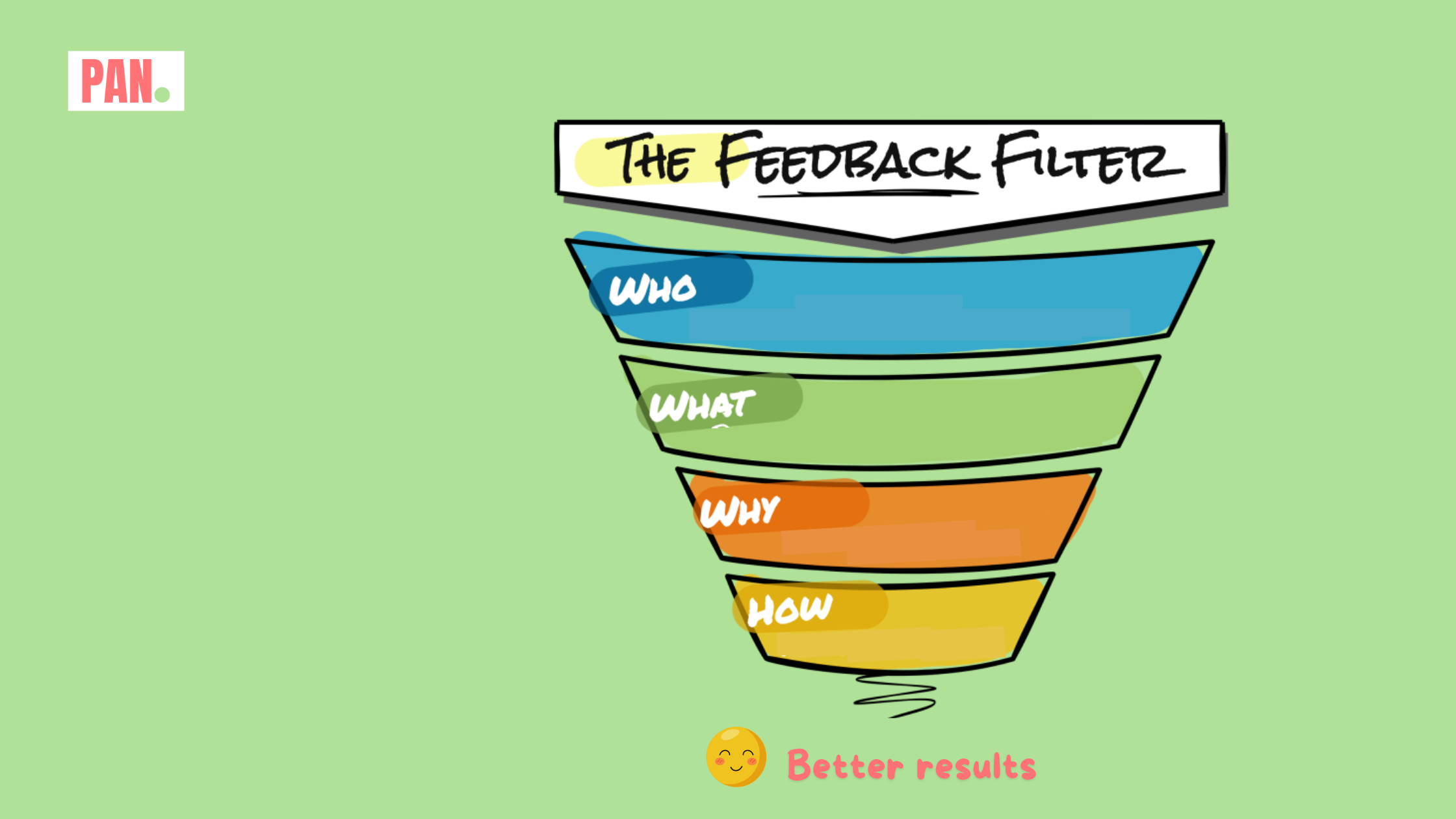Learning to give feedback? Not exactly covered in most college courses, right?
From undergrad to PhD programs, the focus is often on acquiring knowledge, not necessarily how to share it in a way that helps others improve. But here's the thing: feedback is a superpower. It can boost productivity for both the person giving it and the person receiving it. Far from being a one-way street, feedback is a two-way loop that fuels growth, strengthens partnerships, and drives better results.
Believe it or not, many people shy away from giving feedback. Maybe they worry they'll come across as mean, or they think it's easier to just find a new person to do the job. But here's the secret: feedback is the key to getting better. It helps people learn and grow, and when done well, it actually motivates them to do their best work.
Now, let's dive into how you can use this superpower to become an amazing account manager!
Why Feedback Matters?
Think of feedback as a valuable gift – a chance to learn, improve, and refine your approach. By providing constructive feedback to clients and team members, you offer insights that can help them optimize their processes and achieve their goals. Conversely, actively seeking feedback allows you to identify areas for improvement in your own communication style, project management, and overall account management skills. This creates a continuous learning cycle that benefits everyone involved.
The Art of Giving Feedback needn't be daunting. The key is to approach it with a positive and growth-oriented mindset. Here are some tips to ensure your feedback lands effectively:
8 steps to Crafting an Effective Feedback Conversation

- Starts with a good intention: By expressing genuine care and the desire for improvement, the feedback process becomes more constructive and well-received.
- Adopting a role-playing approach: Initiating conversations with phrases like, "If I were you, I would consider..." helps convey recommendations for improvement in a supportive manner.
- The Feedback Sandwich: Structure your feedback for maximum impact. Start with a layer of positive reinforcement, acknowledging the client's or team member's strengths or recent successes. This creates a receptive atmosphere. Next, introduce the constructive criticism (the "meat" of the sandwich). Be specific, focusing on behaviors, actions, or areas for improvement. Use "I" statements to avoid accusatory language (e.g., "I noticed that the report was missing some key data points"). Offer actionable suggestions for improvement, rather than simply pointing out problems. Finally, conclude with another layer of positive reinforcement and encouragement.
- Specificity is Key: Focus on concrete examples rather than vague generalities. Instead of saying "The presentation could have been better," explain specific improvements like "Adding visuals to key points would enhance audience engagement."
- Focus on the "How" not the "Who": Direct your feedback at the action or behavior, not the person's character. For instance, "The report could have benefited from stronger data analysis" is more constructive than "Your data analysis skills need improvement."
- Be Timely: Don't let issues fester – address them promptly while details are fresh in everyone's mind.
- Actionable and Clear: Provide specific suggestions for improvement. The goal is to equip the client or team member with actionable steps they can take.
- Focus on Future Behavior: Emphasize how to move forward positively. Instead of dwelling on past mistakes, focus on strategies for improvement going forward.
Tailoring Feedback to Delivery Styles
People have different communication styles, so it's important to adapt your approach accordingly.
- Direct Communicators: Appreciate clear and concise feedback. They value directness and may even find overly diplomatic language confusing.
- Indirect Communicators: May prefer more subtle and diplomatic language. Focus on positive reinforcement and frame suggestions in a collaborative way.
Importance of Two-Way Communication Feedback

Feedback thrives in an environment where it's viewed as a collaborative tool for mutual growth, not a source of criticism.
- Encourage two-way communication – be open to receiving feedback as well.
- Foster a safe space where team members and clients feel comfortable expressing concerns and offering suggestions.
Applying Quick type of Feedback - Scale Survey
While open-ended questions can provide valuable insights, incorporating scale surveys into your written feedback can be a powerful tool for account managers.
Scaling survey feedback forms as written feedback streamlines data collection, ensuring consistency and relevance. This standardized approach promotes objectivity, reducing subjective biases and facilitating reliable insights. With predefined rating scales, organizations can quickly evaluate performance and identify trends.
For example, an account manager might want to gauge client satisfaction before giving feedback to the team. If the client hasn't yet expressed any concerns, the account manager can send a quick scale survey to check the health of the relationship. This ready-made template of client health scale survey with scale questions can help ad account managers see if the client is happy (green) or unhappy (red).
How to Ask for Feedback?
Actively seeking feedback demonstrates your commitment to growth and improvement.
- The Importance of Asking: Explain why you value their perspective and how their feedback can help you better serve them or manage projects more effectively.
- Timing: Timing is crucial when seeking feedback. It's best to discuss the issue and express your desire for feedback shortly after submitting your work to the client or upper management. Imagine waiting three months to ask for feedback; they might forget about it entirely.
- Asking the Right Questions: Craft specific questions that guide constructive feedback. Examples could include:
- "What aspects of my communication style could be improved?"
- "How can I be more proactive in anticipating your needs?"
- "Were there any sections of the report that were unclear or needed further explanation?"
- Be Receptive and Open-Minded: Approach feedback with a willingness to learn and grow. Don't get defensive – acknowledge the feedback and ask clarifying questions if needed.



